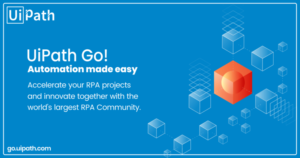

Robotic Process Automation
RPA : The Key to a Fifteen Hour Workweek?
Is a fifteen-hour work week plausible, or even possible? This most exciting prediction to have never come true was made by a man called Keynes. One of the most famous economists of all time, in 1930 he predicted that within two generations we would have the vast majority of our time to dedicate to leisure and family work. It won’t be a revelation to anyone to learn that the fifteen-hour workweek never happened (indeed working hours have been increasing steadily since the 1980s).
Robotic Process Automation (i.e. RPA) technology is one of the things that may hopefully allow Keynes’ ideas to fight back. We’d still recommend holding off asking your new director for a fifteen-hour workweek just yet though, its journey into the mainstream is still in its infancy. It’s one of the most important workplace technological revolutions of the last decade and is happening right under our noses. It’s currently one of the most in-vogue sectors in Tech, with top VC firms such as Sequoia Capital and Accel Partners providing enormous investments into companies such as UiPath and Automation Anywhere — two of RPAs youngest Unicorns. So what exactly is it?
What is RPA?
UI Path, one of the two biggest RPA companies, have done a good job of explaining it on their website.
Robotic Process Automation is the technology that allows anyone today to configure computer software, or a “robot” to emulate and integrate the actions of a human; interacting within digital systems to execute a business process. RPA robots utilize the user interface to capture data and manipulate applications just like humans do. They interpret, trigger responses, and communicate with other systems in order to perform on a vast variety of repetitive tasks. Only substantially better: an RPA software robot never sleeps, makes zero mistakes and costs a lot less than an employee.
What is suitable for automation
Anything that is repeated frequently and governed by relatively simple business rules and logic. The job of an RPA is essentially to mimic human behaviour without the human tendencies for fatigue or errors.

Where is the R&D?
Given the fact that RPA usage is widely expected to rocket throughout the next few years, it’s only natural that the amount of R&D being carried out by its creators and practitioners is similarly going to rise. The R&D carried out in the creation of an RPA platform is obviously an extremely R&D intensive process, and can be covered by our more generic articles on R&D activities within Software Development, so for the purposes of this article I shall try and keep it to the practitioner side of business.
Stepping into the Unknown
RPA is new and as a result requires a niche skill set with a limited pool of talent. It’s also got relatively little information available in the public domain as opposed to more established programming frameworks. As such Stack Overflow won’t be as reliable a crutch when navigating novel problems. Trial and error must therefor abound, and trial and error is a close cousin of R&D
Optimisation of processes
More complex business process customisation will require novel and none-obvious decision trees. Sometimes this will require iterative creation and testing of various decision architectures. By improving the capabilities, data fidelity (accuracy), integrative capabilities or decision outcomes of RPA it is probable that R&D will be incurred.
Taking RPA Above and Beyond
Although the capabilities of the established players in RPA are fairly impressive, there are still many aspects of business processes that won’t be able to be automated by them “out of the box”. Often the established platforms will offer APIs or documentation on how to create programs to work on top of the native RPA architecture. A clear example would be extending UiPath’s .Net architecture by creating an API to help it communicated with a Python machine learning library.
There are many more areas of R&D but these will be unique to the implementation of the RPA and dependent on the particular platform being implemented. For those in the industry, the following applies.
If you are in the midst of an implementation, its likely you’re also in the midst of improving the useability of your robot, reducing its latency, expanding its data sets, improving security or creating new capabilities . It’s also likely you’re a technically competent professional overcoming technical uncertainties. Much like a bank robbery, (R&D) alarm bells should be ringing. Chances are you can claim back 25–33% of your costs back as a Tax Credit.
If the alarm bells are indeed ringing for you – and you’d like to know a little more. Feel free to get in touch with SME for a consultation on which aspects of your day to day qualify for the scheme.


